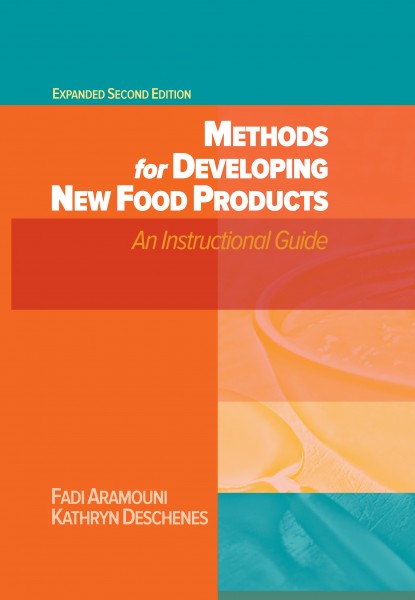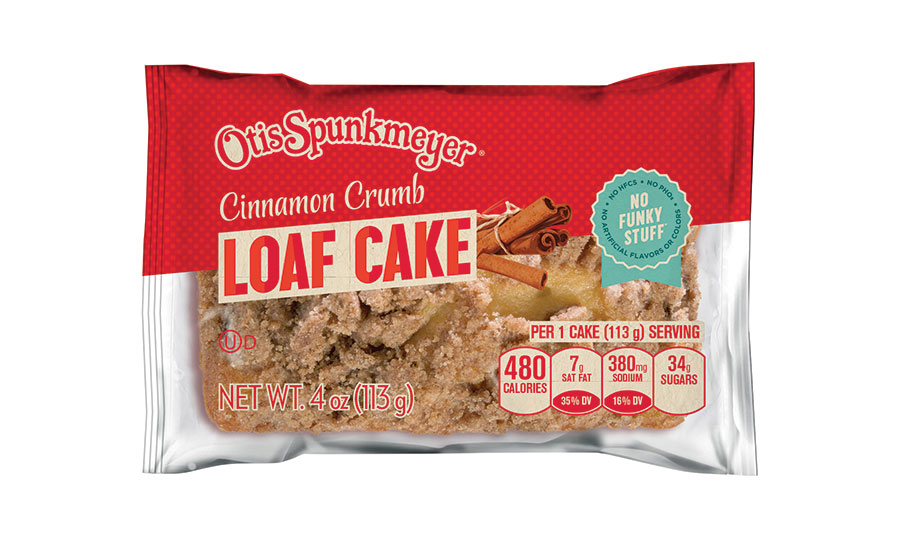Food Manufacturing
Manufacturing for changing consumer needs
As customer behaviors shift, processors need flexibility and adaptability.

Clean label initiatives have been spurred by more consumers avoiding foods with artificial flavors or colors, high-fructose corn syrup or partially hydrogenated oils.
Photo Courtesy of Getty Images

Otis Spunkmeyer’s “No Funky Stuff” label offers consumers a quick way to know that a product contains no artificial flavors or colors, partially hydrogenated oils or high-fructose corn syrup.
Photo Courtesy of Otis Spunkmeyer


If a six-letter word can be classified as a “four-letter word,” then “demand” might fit the bill for food processors. Demand for a product is a good thing, but nailing down exactly what is in demand now, what might be in demand in the future and how you get from point A to point B is one of those things that keeps processors up at night.
That’s the case more than ever these days, because instant feedback from social media, flash-in-the-pan fads and shifting consumer demands for everything from less-complicated ingredients to a smaller carbon footprint can cause processors to get caught off guard when a market suddenly shifts. To mitigate the risk of that, processors have no choice but to be flexible and adaptable. Failing to do so can be the difference between catching a long-term trend at the right time to be successful and missing out entirely. Or, even worse, aiming at the wrong target and having a product rollout that fails miserably.
The first step to identifying current and future demands and how they may shape your business decisions is understanding that there’s a difference between responding to a fad and adapting to a trend. That may seem simple, but if a diet craze is sweeping the nation, is it something that will have staying power, or will it burn out in six months when people get tired of only eating bread on even-numbered days? That may seem like a far-fetched example, but the odds are that most processors have had situations where market research shows something just as outlandish is currently popular, because it’s Dr. Oz’s latest tip for healthy eating.
With lead times on ingredient changes and product development being measured in months at a minimum, correctly identifying when something has legs is critical. Being able to respond to it with something as relatively easy as changing packaging or tweaking a label is the ideal scenario. But it’s often far more complicated than that, which is where the idea of flexibility and adaptability comes into play. For processors that want to be able to adjust on short notice, there are a few things to keep in mind.
#Trending
Social media is a double-edged sword when it comes to identifying trends. The instant feedback and ability to identify a passionate base of consumers give processors and market researchers a powerful tool to spot trends in their early stages and get a jumpstart on adjusting. But the social media audience is still a small percentage of the consumer base as a whole, and the very nature of platforms, such as Facebook and Twitter, amplifies the most vocal users instead of giving a comprehensive view of the zeitgeist.
Consequently, the explosion in social media hasn’t changed the fundamentals of identifying a trend, says Kara Nielsen, vice president of trends & marketing, CCD Innovation. CCD Innovation specializes in identifying trends in the food market from both the culinary and consumer sides.
“We identify it in the same way; it’s just that things go faster,” Nielsen says.
When it comes to identifying trends, the key thing CCD looks for is whether something appears to have staying power. A fad may just be a fad, but it might also be a part of a larger trend. Specialty one-off products or seasonal products from restaurants or retailers can often be responses to a fad, yet still have implications for a lasting trend in the marketplace. Nielsen points out that trends are long-term shifts in what consumers want, while fads, even if they seem related, burn out quickly.
“Unicorn-colored coffee is not going to last for a while,” she says, “but the trend of making food pretty and colorful and Instagramable is going to last a little longer.”
With that in mind, processors can break down a trend into its constituent pieces and decide how to proceed. As Nielsen says, a specific drink or food might get a lot of publicity for a short time, but it’s actually just a smaller piece of a trend towards consumers wanting different products. Responding by making unicorn-colored coffee might result in a product that flops when consumers have moved on by the time the product hits the market, but taking a larger view of the trend of consumers wanting more varied food and beverages helps you identify what your customers need and how you can adapt to those needs.
#CleanLabels
There are some overarching trends currently affecting the food industry, which CCD and other industry organizations have identified. One of the big ones, which will likely come as no surprise to most processors, is clean label initiatives.
However, there’s a big challenge there: Nobody knows exactly what a clean label is.
“It’s kind of like all-natural: There’s no real standard around it, but everybody kind of knows what it is or, at least, think they know what it is,” says Greg Tompkins, senior VP of R&D and commercialization for Otis Spunkmeyer.
At Otis Spunkmeyer, the response to consumer demand for clean labels has led to the “No Funky Stuff” initiative, which serves a dual purpose. For one thing, it’s a catchy, memorable slogan to put on a package and catch consumers’ eyes. But it also carries a significant meaning, which is that the products with the label have no artificial flavors or colors, high-fructose corn syrup or partially hydrogenated oils.
All of those ingredients have come under fire in the recent past, as consumers look for healthier options—or at least options that are perceived to be healthier—and they gave Otis Spunkmeyer a way to define its version of a clean label.
“We approach it in terms of ‘what can we clean up without impacting the character of the food,’” says Tompkins. “For example, no artificial flavors and colors is pretty straightforward; it creates a little bit of a cost impact,” but it can be accomplished without fundamentally altering the taste of the food.
While Otis Spunkmeyer has its own version of a clean label, other processors might have different versions, because there is no industry standard. And even with a clean label, it doesn’t always mean that it’s exactly what consumers are looking for, says Jorge Izquierdo, vice president of market development, PMMI.
“Consumers are pushing hard in terms of health, wellness and convenience,” says Izquierdo. “Of course, health and wellness don’t always go in the same direction as convenience.
“On the health and wellness side, you’re hearing a lot about clean label. But consumers are still looking for long shelf life. Those trends tend to somewhat contradict each other.”
One thing that holds true across clean label initiatives is that there are certain things that consumers—or at least enough of them to make it worthwhile—are looking to avoid. As mentioned previously, for Otis Spunkmeyer, that means no artificial flavors or colors, high-fructose corn syrup or partially hydrogenated oils. But as Izquierdo points out, there are all sorts of things, “ingredients with the letter x, hyphens, numbers, ingredients with more than three to four syllables” that can be deal-breakers for consumers if they appear on a label. Or not. Or maybe sometimes, but not other times. Without a universal definition of a clean label, processors have to play a little bit of a guessing game on what they need to eliminate from an ingredients list.
“You’re better than you were before, but there’s not an absolute clean label,” Izquierdo says.
#GoodStuff
Clean labels offer processors a way to tout what’s not in their products. But promoting what is in the product can be a way to respond to consumer trends as well.
Think about your last trip to the grocery store: You probably saw a number of different items, from fresh produce to frozen waffles, that called out specific ingredients or where a product is from. One part of calling out specific ingredients is consumers wanting to know that something like fresh fruit is used in a processed product. Another aspect of is consumers having more interest in how far a product has traveled to get to them, as concerns about carbon footprints and sustainability have become more common.
At Otis Spunkmeyer, this trend of advertising specific ingredients has offered a way to take advantage of something that’s been in products for a long time, but is now becoming more important to spotlight. As a specific example, Tompkins points out that some of the company’s products contain fresh blueberries from Maine, which is a selling point for consumers looking for fresh ingredients.
“It’s always been there; it’s not anything that R&D has to change,” he says. “It’s more alerting folks to this attribute that was unknown to them before.”
A callout doesn’t even have to be as specific as “X ingredient from Y location.” Something as simple as calling out how much protein a product contains or that it’s locally produced can help draw consumers to one product over another one.
#DataDriven
Food processors have access to more data than ever before, which can help them evaluate consumer trends and respond to them. One of the big benefits of having access to more data at every step of the process, from the time ingredients come in to the time a product leaves the shelves at a grocery store or is sold at a restaurant, is that it helps processors understand what’s working and what isn’t. That data can be used to revamp or refine production processes, and allows for more efficient, more nimble control of production lines, recipes and ingredients.
“There might be multiple systems still, but there’s one master data repository for all their information” in a production facility, says Eric Schaefer, vice president of Stone Technologies. Stone Technologies is a certified member of the Control Systems Integrators Association and offers process controls and automation solutions among its services.
Having that data repository and collecting huge amounts of data from every step of the process offer processors critical information for managing their responses to trends and adapting to changing consumer demands. But it has to be managed carefully to avoid being swamped with information that you can’t really use, says Ben Rucker, director of process technology, CRB.
“You shouldn’t track anything you can’t manage,” he says. “Even though you may have the ability to track it, it may not be taken into account in your management.”
This comes into play in a couple different ways. The first is simply being overwhelmed by data and unable to really define anything usable from it. That leads to a lot of wasted time and effort, as you try to identify something that isn’t really a needle in a haystack, but a needle in a pile of needles.
The second is that if you’re not clear on what you want to do and how you want to do it, you end up not giving your production people the support they need to get things done, says Jason Osicka, senior process engineer, CRB.
“It’s bottom-up driven, but it’s not top-down supported,” says Osicka. “[Processors say] ‘Do this,’ then they rely on the plant team to do it, but they don’t have the horsepower to do it.”
Avoiding this requires an objective evaluation of what data you want to collect and how you want to use it. Managed properly, data offers processors the flexibility and adaptability they need to change a production process, a recipe or an ingredients list to meet changing demands. Managed improperly, it leads to information overload and inertia that can’t be overcome, because you don’t know what is really important and what is noise obscuring the signal.
“You have to be honest with yourself on what you really have time to dissect and manage,” says Rucker.
The management and usage of data are becoming ever more important as automation becomes more common, production schedules tighten, and the time available to meet changing demands shrinks. As all of these things come together to present a challenge for production, mistakes early on in the process can cascade into bigger problems down the line, even if they don’t seem like big problems when viewed individually.
“Most people are aware of their large downtimes,” says Schaefer. “They know when a single machine causes 20-minute downtimes. But if you think about it, the one-minute downtimes, they add up pretty quickly, and a lot of people are not aware of what’s causing those.”
#TheBottomLine
Adapting to changing consumer trends is kind of like trying to catch fish with your bare hands. You’ll be able to get one every so often, but a lot of them will slip past entirely or squirm out of your hands when you think you have them under control. But a 100 percent success rate isn’t necessary, because it’s not possible to respond to every consumer trend by completely overhauling your product line.
What is necessary is being able to respond to the trends that will affect you directly, and identifying them as early as possible is the key to doing so. Market research, social media feedback, customer and consumer feedback, and larger industry trends all go into formulating how you can respond and adapt when necessary.
Sometimes, it’s as clear-cut as identifying what is or isn’t in a product. Calling out specific ingredients can appeal to customers, as can pointing out that a product doesn’t contain a certain ingredient or has been processed without preservatives or certain additives.
Having the ability to understand when something is a fad and when something is an actual trend goes a long way towards helping you meet a new or resurgent demand, and the proliferation of data can help shape how your production and supply processes change when necessary.
But even within trends that are showing signs of being long lasting, such as clean labels, there are times when there’s only so much you can do. You can offer consumers what they say they want, but you can’t make them buy it, says Otis Spunkmeyer’s Tompkins.
“In some cases, it seems like demand is people wanting the choice, but not making that choice,” he says. “They would like the option in case somewhere down the line they want it, but in actuality, when dollars hit the table, they’re after something that is maybe a little less clean but a little more satisfying to them.”
For more information:
CCD Innovation, www.ccdinnovation.com
CRB, www.crbusa.com
Stone Technologies, www.stonetek.com
Looking for a reprint of this article?
From high-res PDFs to custom plaques, order your copy today!












